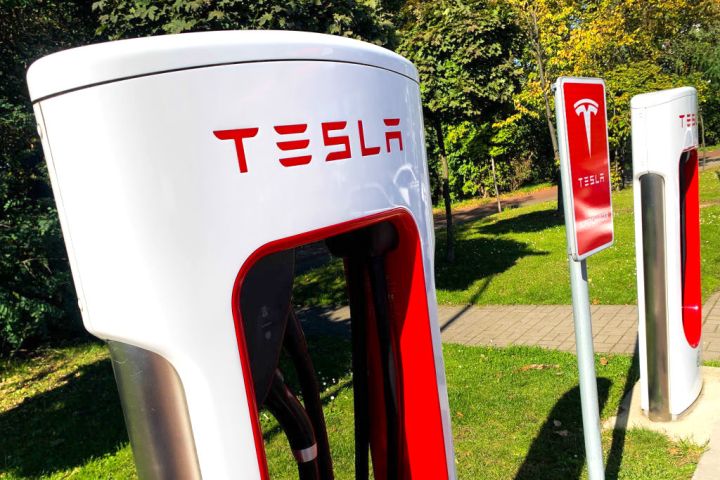Drivers of Ford’s electric vehicles (EVs) will find charging them a little easier starting next spring after Tesla on Thursday promised the availability of 12,000 of its Superchargers across the U.S. and Canada.
The move will double the number of fast-chargers currently available to Ford’s EV owners.

As Ford uses a different connector than Tesla, the latter will provide an adapter at the charging point for Ford F-150 Lightning, Mustang Mach-E, and E-Transit vehicles.
Starting in 2025, Ford will equip future EVs with Tesla’s NACS charge port — removing the need for an adapter — for direct access to Tesla Superchargers, the automaker said.
The agreement between Tesla and Ford is linked to President Joe Biden’s Bipartisan Infrastructure Law, announced in February, which offers $7.5 billion in subsidies for EV charging as part of plans to dramatically boost the number of publicly available vehicle chargers along U.S. highways.
Tesla started opening up its Superchargers to other EVs in Europe in 2021 before gradually expanding the availability. Its fast chargers can add up to 200 miles of range in just 15 minutes.
“This is great news for our customers, who will have unprecedented access to the largest network of fast chargers in the U.S. and Canada with 12,000-plus Tesla Superchargers, plus 10,000-plus fast chargers already in [Ford’s] BlueOval Charge Network,” said Jim Farley, Ford president and CEO. “Widespread access to fast charging is absolutely vital to our growth as an EV brand, and this breakthrough agreement comes as we are ramping up production of our popular Mustang Mach-E and F-150 Lightning, and preparing to launch a series of next-generation EVs starting in 2025.”
Marin Gjaja, chief customer officer of Ford Model e, praised the EV maker led by Elon Musk, saying: “Tesla has led the industry in creating a large, reliable, and efficient charging system and we are pleased to be able to join forces in a way that benefits customers and overall EV adoption.”
Gjaja added: “The Tesla Supercharger network has excellent reliability, and the NACS plug is smaller and lighter. Overall, this provides a superior experience for customers.”
Editors' Recommendations
- Tech giant reveals nice price for new EV to take on Tesla
- Here’s how Ford will give EV customers Tesla Supercharger access
- Tesla introduces ‘congestion fee’ for Supercharger stations
- Toyota joins ‘the Tesla plug’ club
- Tesla’s Elon Musk can build his unusual Supercharger station


